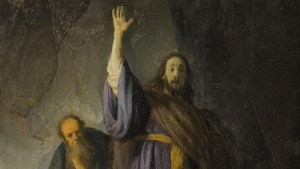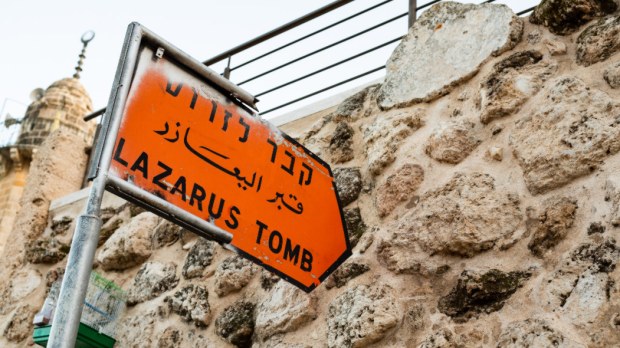Bethany, in the Holy Land, is the site of one of the most memorable of Jesus’ miracles: the resurrection of his friend Lazarus. It’s described in a key passage of the Gospel of John, in which we see Jesus weep with the mourners and raise Lazarus from the dead; it’s also a turning point in his relationship with the Jewish religious authorities of the time, who decide they must have Jesus killed. Now, for the first time, a full archeological survey is being carried out on Lazarus’ tomb, along with important restoration work.
“We’ve already carried out the first excavations,” explained Osama Hamdan, an architect and the director of the Mosaic Center that is carrying out the restoration, in a video published by
on July 31. “We’ve done a laser scan (…) and many analyses as well on stones and rock. Interesting elements are emerging.”
Read more:
Seeing the Raising of Lazarus through Rembrandt’s own eyes
Due to its importance, and to a variety of historical events including an earthquake, the Crusades, and the Muslim reconquest of the Holy Land, a series of churches, convents and mosques have been built on the site, often incorporating elements of earlier constructions.There are currently a mosque, a Catholic church, and a Greek orthodox church all in close proximity at the site, the mosque having been built on top of the main previous Christian structures. This history of transformations has left plenty for archeologists to study.
“It’s interesting to learn more about the transformation of this tomb. We are doing the restoration work—because it was in a very bad situation—but at the same time we are trying to understand much more about how Lazarus’ tomb was transformed,” Hamdan told Christian Media Center.
The restoration work includes mosaic work incorporating surviving parts of ancient mosaics from various periods (the 4th, 6th, and 12th centuries), and new additions “to make people understand the space that was here,” Hamdan continues. “This space, even if it has been extended, has always been used throughout the centuries.”
One of the purposes of the work being done is didactic, to teach Palestinian students and children about the cultural heritage of their region, Hamda told Pro Terra Sancta. To this end, Shira Shafie, a 24-year-old Palestinian architect who works for the Mosaic Center carrying out the restoration, has created 3D reproductions of the various buildings that have been on the site throughout its history, including the tomb itself. “Shira was given the task of transforming archaeologists’ data, drawings and maps into a virtual building that allows the spectator to walk between the pointed arches and the rooms of religious buildings,” Pro Terra Sancta reports.

